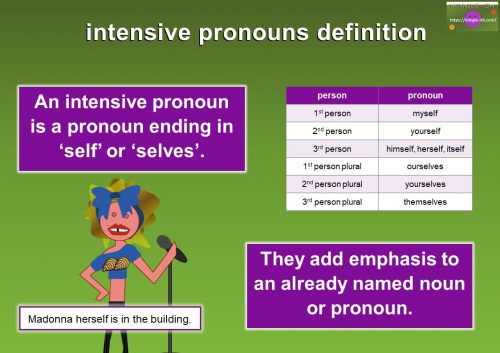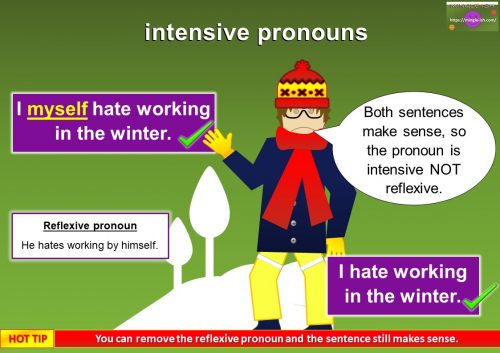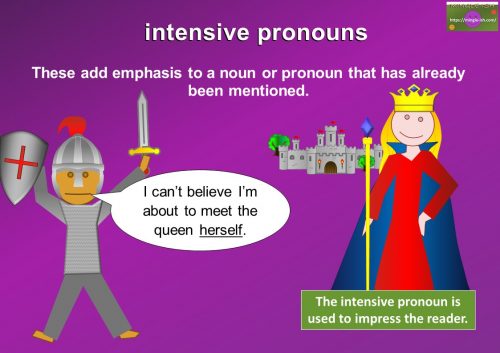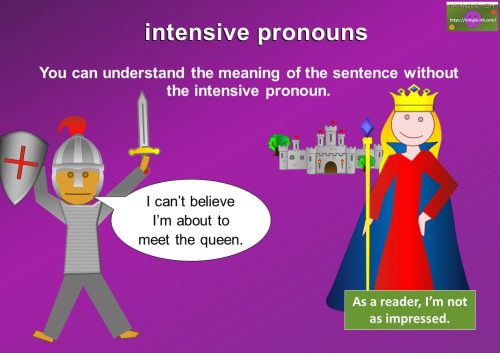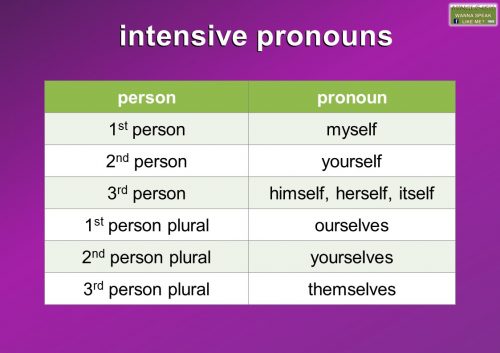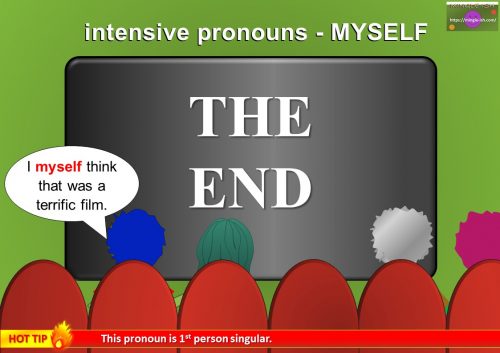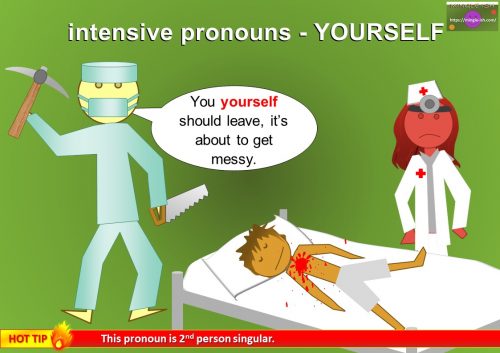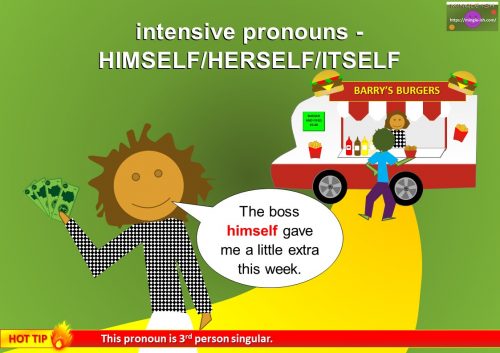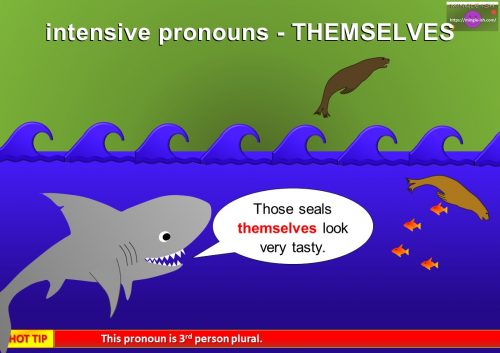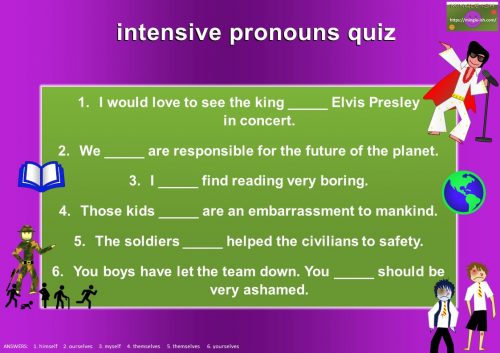Intensive pronouns are pronouns ending in ‘self’ or ‘selves’. Does this sound familiar? In fact, they have exactly the same forms as reflexive pronouns with a slightly different function. They differ from reflexive pronouns as they aren’t an essential part of the sentence. i.e. The sentence will still function without it.
intensive or reflexive?
You can easily work out if the pronoun is intensive or reflexive by removing it from the sentence. If the sentence still makes sense, it’s intensive. If the sentence doesn’t make sense, it’s reflexive.
Intensive pronouns often appear as appositives after nouns or other pronouns. Their function is to add emphasis to a noun or pronoun that has already been mentioned. It also makes your writing more interesting, but be careful not to overuse them.
intensive pronouns explained
Let’s take a look at them in more detail and see how they emphasise speech and writing.
Intensive pronouns list
Here’s the full list of intensive pronouns for you to learn, don’t worry, there’s only 6 and they all end in either ‘self’ if singular or ‘selves if plural:
- 1st person – myself
- 2nd person – yourself
- 3rd person – himself, herself, itself
- 1st person plural – ourselves
- 2nd person plural – yourselves
- 3rd person plural – themselves
examples of intensive pronouns
Are you ready to see some real-life examples? Have a go at creating your own too.
intensive pronoun exercises
Are you a pronoun pro? Now it’s time to test your knowledge… Fill in the blanks by choosing the correct pronoun, refer to the list above if you need to. The correct answers are at the bottom of the picture.
Good luck!
Did you know there are a few more types of pronouns? Click the links below to learn all about them.
